Welcome to join the 15-day China Yangtze River cruise tour. In the following half a month, we will firstly come to Beijing. As the capital and economic, political, cultural center of China, you will experience its modern prosperity and historical details from the Tian’anmen Square, the Forbidden City, the Palace Museum, and the Temple of Heaven to the Great Wall, Beihai Park, and Beijing Hutong. And then we will come to Xi’an and Luoyang, experiencing the differences of two ancient capitals of 13 Dynasties. You can also feel the ancient culture and the prosperity of ancient China in the two cities. The Yangtze River cruise from Chongqing will bring you a totally different experience. Instead of quaint city landscape, you will enjoy splendid natural scenery. During the Yangtze cruise from Chongqing to Yichang, you will experience the mystery of Fengdu “Jade Emperor” and “Ghost City”, the magnificence of the Wu Gorge, and the greatness of the Three Gorges Dam Site. Besides, you will also be captured by the spectacular scenery of the Li River in Guilin and experience the exotic life in Hong Kong.

After your arrival in Beijing, your tour guide will wait for you at the airport arrival hall and then escort you to the booked hotel for a good rest. Beijing, the capital of China, is located in the north of China that borders Tianjin Municipality and mostly surrounded by Hebei Province. With more than 21 million residents living in an area of 16410.5 square kilometers, it is the most populous national capital city all over the world. As a global city, Beijing also plays an important role in culture, politics, business, economics, education, and science and technology for being one of world’s leading centers. In addition, there are many places of interest in Beijing, especially some ancient buildings. Among those places of interest, the Palace Museum, the Great Wall, Tian’anmen Square, Beihai Park, the Temple of Heaven, and the Summer Palace are the favorites of tourists all over the world. Except Beijing’s tourist attractions, we will also cruise on Yangtze River during this tour. Now, let’s start our fascinating tour.
After breakfast, we will head to Tian’anmen Square. Tian’anmen Square, the heart of Beijing, is the largest city center square in the world. Covering an area of 44 hectares, the square is 500 meters wide from east to west and 880 meters long from north to south. It is all paved with specially processed light-color granite stone. It is huge enough for about one million people so that the founding anniversaries of the People’s Republic of China have been held here. Tian’anmen Square was the locality of numerous major important political and historical events. It has witnessed the development of China. It, for example, has an important symbolic significance that on May 4th, 1919, students demonstrated against the Chinese provisions of the Treaty of Versailles here.
The most solemn moment on the square is the raising of the national flag in every morning. While strolling in the Tian’anmen Square, you will feel the rapid development of China by looking up the magnificent layout, majestic momentum, and the vast landscape.
Then, we will go to the Forbidden City (closed every Monday). The Forbidden City, also known as the Palace Museum, is China’s most significant attraction. It can trace back to the Yuan Dynasty of the 13th century. Since the capital was moved from Nanjing during the Ming Dynasty between 1406 and 1420, the palace has been enlarged to an area of 720,000 square kilometers, with its length of about 960 meters from south to north and its width of about 750 meters from east to west. This beautiful palace has been home to 24 Ming and Qing Emperors, earning its name the “Forbidden City” in that the ordinary people weren’t allowed to access it. It is divided into an area that is used for commercial and administrative purposes and the private parts that was once used by the emperors and their concubines. When walking in the palace, you can feel the magnificence of the complex and the wisdom of ancient Chinese architecture.
After that, we will come to Jingshan Park. Jingshan Park, located in the north of the Forbidden City on the central axis of Beijing, is a beautiful royal landscape garden. Covering an area of 230,000 square meters, the park is established on Jingshan Hill, which was originally named Wansui Hill (Long Live Hill), Coal Hill or Meishan Hill. An artificial hill with five peaks was made during the Ming Dynasty (1368-1644) and each peak has a pavilion. In every pavilion, there was originally placed a bronze Buddha statue that represented one of the five different tastes: sour, sweet, bitter, spicy and salty. But unluckily, all of these statues were lost during the war in 1900. Among the five pavilions, the Wanchun Pavilion (Ten Thousand Spring Pavilion) sits at the hill’s central point of the city. So you can have a panoramic view of the city. From the view of the pavilion, you can see the splendid Forbidden City in the south, the dignified Bell and Drum Towers in the north, as well as Beihai Park and Miaoying Temple in the west.
In addition, Jingshan Park is also famous for its charming natural scenery. Peony, rose and other plants are planted in an area of 1,100 square meters. And the park is the biggest peony garden in Beijing. Each year, there are 20,000 peonies of about 200 varieties in full bloom during May, thus the park displays a splendid and wonderful scene. Numerous tourists come here from all over the world to have a glimpse of such amazing scene. So, if lucky enough, you can enjoy the beauty during the tour.
After lunch, we will head towards Shichahai and pay a visit for the nearby Hutong. Hutong is the name given to a narrow lane, alley, or small street between rows of single-storey Siheyuan dwelled by local people in the past. When viewing from the top, you will find the Hutongs are divided by different buildings and thus forming the shape of maze or chess board. However, there are not so many Hutongs now because of urbanization. So, it is a pity if you don’t come here to experience the life of locals when visiting Beijing.
During the tour, we will have a tour in the Hutong by rickshaw. You can feel the enjoyment that ordinary people usually cannot get. And then, we will visit one of families in the Hutong and thus learn more about life that old Beijingers have led before.
Then, we will go on our tour for next tourist attraction- the Summer Palace. Situated in Haidian District of Beijing, the Summer Palace is about 15 kilometers away from the downtown area. As the largest and most well-preserved imperial garden in China, it has exerted great influence on Chinese horticulture and landscape because of its famous natural views and cultural interests.
The Summer Palace covers an area of 2.9 square kilometers, with three-quarters of it being water area. And most of its area was dominated by Longevity Hill and Kunming Lake. Most of the buildings were built along the south-north axis of Longevity Hill, which is divided into the front and back hills. The front hill is situated with lots of splendid pavilions and halls while the back hill is filled with natural beauty. Besides, there are more than 3,000 different kinds of Chinese ancient buildings, which collect over 40,000 different kinds of valuable historical relics from every dynasty. While travelling along the route, you can enjoy different kinds of beauty from garden, historic relics to pavilions, halls, bridges, and towers.


After breakfast, we will drive northward about 36 kilometers from the Summer Palace to Ming Tombs after about an hour. The Ming Tombs are a collection of mausoleums that were built in the Ming Dynasty (1368-1644). Although the first Ming emperor’s tomb is located in the former capital Nanjing, with the capital moved to Beijing, most of other emperors’ tombs are located in Beijing and are totally known as the Thirteen Tombs of the Ming Dynasty. Located in Changping District of Beijing, they are about 42 kilometers away from the center of Beijing, covering a total area of more than 120 square kilometers. There are millions of tourists coming to the site for a visit for its fame as the best-preserved mausoleum area with the most emperors buried.
Today, we will pay a visit to the Sacred Way and Chang Tomb. In front of the imperial mausoleums, there usually is a sacred way that means the road leading to the Heaven. If you have some background information about Chinese ancient emperors, you should know that the emperor was called the son of Heaven. So, the Sacred Way is a road that emperors come to the country and leave his country returning to the Heaven after his death. Stone statues, often viewed as important decorations of the mausoleum, are lined with the Sacred Way. These statues are usually 12 human figures and 24 animals. All of these animals are said to be guardians of the mausoleums and they are supposed to make shifts at midnight. The Sacred Way was originally once built to lead to Chang Tomb, and then another 12 tombs were built.
Chang Tomb, the joint burial tomb of Emperor Yongle and Empress Qian, is located in the southern range of Tianshou Mountain. Among the thirteen tombs of Ming Dynasty, Chang Tomb is the largest and best-preserved one with its longest history. As the first tomb in Ming Tombs, Chang Tomb has also become the main attraction in this area.
In the afternoon, we will drive northwest about 30 kilometers and 30 minutes to Badaling Great Wall. Stretching across the mountain ridges of the pass from the Shixiaguan section in the south to the Shuiguan section in the east, Badaling Great Wall possesses a length of 7.6 km. Badaling is the most representative and magnificent part of the Great Wall of the Ming Dynasty. It is easily accessible and has easier walking conditions than other sections of the Great Wall. A total number of 372 state leaders and VIPs, including Presidents Nixon and Reagan, Prime Minister Thatcher, and Queen Elizabeth II, have paid a visit before.
Just as a famous poem by Mao Zedong goes, “He who has never been to the Great Wall is not a true man”. So, most of people said that it is a pity if you lose the opportunity to the Great Wall when travelling in Beijing. There also is a tablet that inscribes the poem. And the highest point of this section is called ‘Good Man Slope’. From this point, you can have a bird’s eye view of the Badaling Great Wall and feel the overwhelming magnificence of it.
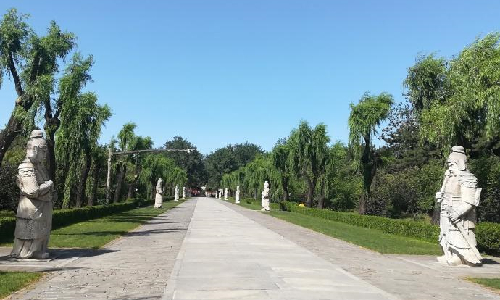
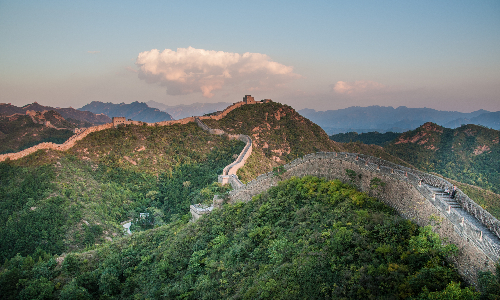
 Xi’an
Xi’an In the morning, we will continue our tour in the Temple of Heaven. The Temple of Heaven is an imperial complex of religious buildings situated in Dongcheng District of Beijing. Among many ancient sacrificial buildings in China, this temple is the largest and most representative existing masterpiece. Originally, the Temple of Heaven was the place where emperors of the Ming (1368 - 1644) and Qing (1644 - 1911) Dynasties held the heaven worshipping ceremony. It was first built in 1420, during the reign of Emperor Yongle of the Ming Dynasty. And it was enlarged and rebuilt during the reigns of the Ming Emperor Jiajing and the Qing Emperor Qianlong.
Covering an area of 2,700,000 square meters, the Temple of Heaven is even larger than the Forbidden City. The temple is enclosed by a long wall. Its northern part is semicircular symbolizing the heaven and the southern part is square symbolizing the earth. The design reflects an ancient thought of “the heaven is round and the earth is square” among the Chinese people. Besides, the northern part is higher than the southern one. This design shows that the heaven is high and the earth is low in ancient Chinese people’s minds.
Among many tourist attractions, Circular Mound Alta, Echo Wall, Imperial Vault of Heaven, Three Echo Stones are the most worthwhile for your visiting.
After lunch, we will send you to the railway station and take the estimated high speed train G57 14:00/18:24 to Xi’an. After arriving in Xi’an, our tour guide will pick you up at the station and escort you to your hotel for a good rest.
Xi’an is the capital city of Shaanxi Province. As the oldest surviving capital of ancient China, Xi’an is home to thousands of years of Chinese heritage and history. Xi’an has a history of more than 3,000 years and was known as Chang’an in ancient times. As the capital of 13 dynasties, 73 emperors once ruled China here. So it is safe to say that Xi’an is the root of Chinese civilization. In addition, it also exerted a great influence on the world commerce as the eastern starting point of the Silk Road in ancient China. Just as the saying goes, “If you haven’t been to Xi’an, you haven’t been to China!” Therefore, you are wise enough to choose visiting Xi’an and we hope you have great fun here!
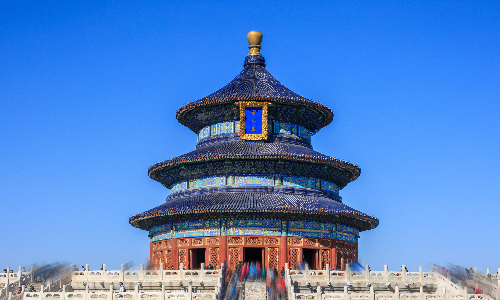

After breakfast, we will drive eastward for about 45 kilometers in 40 minutes to visit the Terra Cotta Warriors and Horses Museum. The museum is located in Lintong District, Xi’an. As a collection of terracotta sculptures, the Terra Cotta Warriors and Horses mainly depict the armies of Qin Shi Huang, the first emperor of China. And it is a form of funerary art buried with the emperor during 210BC–209 BC with the purpose of protecting the emperor after his death. Up to now, the Terra Cotta Warriors and Horses Museum, collecting more than 50,000 pieces of collections and covering a total area of 46.1 hectares, has established and opened three pits and a relic exhibition hall to public.
Pit 1, 230 meters long and 62 meters wide, contains the main army of more than 6,000 figures. It has eleven corridors, most more than 3 meters wide and paved with small bricks with a wooden ceiling supported by large beams and posts. Pit 2 has cavalry and infantry units as well as war chariots and is believed to represent a military guard. Pit 3 is the command post, with superior officers and a war chariot. From the delicate sculpture of terra cotta, you will be amazed at the outstanding techniques of the builders. In addition, you can visit the exhibition gallery to learn more about the terra cotta warriors and horses. All of the collections will leave you an unforgettable memory and you can share your experience with your friends and families about this tour on Facebook or Twitter.
In the afternoon, we will head toward the Big Wild Goose Pagoda and the City Wall. The Big Wild Goose Pagoda is a monumental Buddhist pagoda located in the southern suburb of Xi’an City, about 4 kilometers from the downtown of the city. It was built in 648 during the Tang Dynasty and originally had five stories. During the reign of Empress Wu Zetian, the pagoda was rebuilt. And during the Ming Dynasty, its exterior brick facade was renovated. Now, the pagoda is about 64 meters tall and you can get a panoramic view of the Xi’an city from the top of the pagoda. And it attracts a great number of tourists from different places around the world for its fame in Buddhist religion and unique style of construction. I also believe that you will feel astonished at it after your visit.
The City Wall represents one of the oldest, largest and best-preserved city walls of China. It was built under the reign of Emperor Hongwu, Zhu Yuanzhang, as a kind of military defense system. In addition, it also has been refurbished many times since it was built in the 14th century. And it encloses an area of about 14 square kilometers. Since its opening to the public, the City Wall has attracted numerous visitors from all over the world. And if you pay great attention to the construction, you will feel the wonderful and admiring building techniques of our Chinese people.
After you visit, today’s tour comes to an end. Your tour guide will send you back to your hotel for a good rest. And we continue the tour the next day.
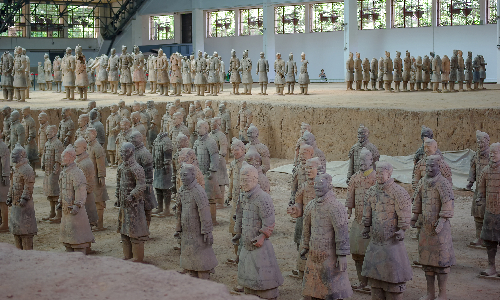

 Luoyang
Luoyang After breakfast, our tour guide will escort you to the high speed railway station and take the estimated high speed train G2686 10:16/11:42 to Luoyang. After arriving at Luoyang station, your local tour guide will pick you up at the station and then go on our tour in the afternoon.
In the afternoon, we will visit the Longmen Grottoes in Luoyang. The Longmen Grottoes are some of the best examples of Chinese Buddhist art. They are located about 12 kilometers south of Luoyang, Henan Province, with tens of thousands of statues of Shakyamuni Buddha and his disciples in the grottoes. Besides, Longmen Grottoes, Yungang Caves and Mogao Caves are viewed as the three most famous treasure houses of stone inscriptions in China.
The Longmen Grottoes can date back to Northern Wei Dynasty when the Emperor Xiaowen firstly directed the construction around 493. After that, the Longmen Caves had not stopped building and extending its scale during the next 400 years until the Northern Song Dynasty (960-1127). There are more than 2,300 holes and niches, 2,800 steles, 40 dagobas, 1,300 caves and 100,000 statues being kept in the cave. Now, you still can see 2,345 niches, more than 100,000 Buddha sculptures and over 2,800 carved steles on display inside the grottoes. The Longmen Grottoes can be a visual delight for you as their stunning situation around the cliffs and the river.
After your visit in Longmen Grottoes, we will escort you back to the hotel in Luoyang for a break.
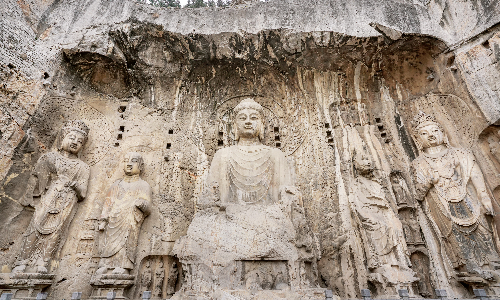
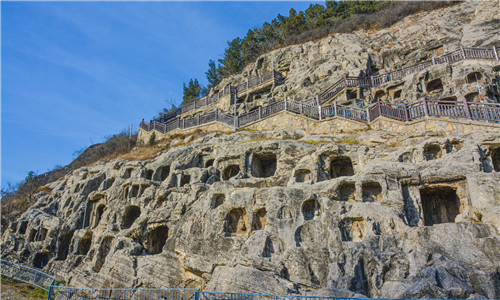
In the morning, we will visit the White Horse Temple. The White Horse Temple is located about 12 kilometers away from the east of Luoyang City, Henan Province. As the first Buddhist temple in China, it was built in 68 AD under the patronage of Emperor Ming in the Eastern Han Dynasty (25-220).
But do you know why it is named “the White Horse Temple”? The story goes like this: The emperor of Eastern Han Dynasty sent a delegation of his trusted one to study Buddhism in ancient India in the year of 64 AD. Three years later, two eminent Indian monks, She Moteng and Zhu Falan, came back from ancient India with the delegation. A white horse was also brought back with them and the horse carried Buddhist sutras and Buddhist figures on the back. And in order to express his thanks to the two monks and their white horse, the emperor ordered the building of a monastery which he named the White Horse Temple in the following year. That is the origin of the White Horse Temple.
The White House Temple, a solemn and tranquil place, is covered with green ancient trees. Outside the gate, there is a pool with fences around and lively fish in the water. It is a place for believers to set some captive animals free. After crossing the pool through a stone bridge, you will enter the temple. The east and west of the gate are the tombs of She Moteng and Zhu Falan respectively. There stands a tablet pavilion with Chinese characters written by a famous calligrapher during the Yuan Dynasty (1271-368) in the eastern corner, which describes the history of the temple.
After stepping into the temple, the Hall of the Heavenly Kings, the Hall of the Great Buddha, the Hall of Mahavira, the Hall of Guidance, and the Cool and Clear Terrace appear in proper order in front of your eyes. All of them will bring you a special view. Take the Hall of Great Buddha as an example. It boasts the most spectacular architecture in the temple. With exquisite pantiles on the roof, the upturned eaves and the bracket system reflect the architectural style of the Ming Dynasty (1368-1644). The Buddhism founder Sakyamuni’s statue stands in the middle of the hall for people to make offerings. And another two statues stand next to him on both sides. All of them demonstrate the vivid outlook and exquisite skills of the craftsmen.
In the afternoon, we will drive toward southeast for about 47 kilometers in 70 minutes to Shaolin Temple. The Shaolin Temple is a renowned Chinese temple recognized as the birthplace of Chan sect of Chinese Buddhism and the cradle of famous Shaolin Kung Fu. It is located at the foot of Wuru Peak of Songshan Mountain Range in Dengfeng County, Henan Province. Sitting in the hinterland of Shaoshi Mount and being hidden in the thick forest, the temple is so named as Shaolin. In addition, it enjoys a great reputation for over 1000 years since the Tang Dynasty (618-907). And it was originally built in 495 in the Northern Wei Dynasty (368-534).
There are many tourist attractions for you to visit, such as Forest of Steles, the Mahavira Hall, the Hall of the Heavenly Kings, the Pagoda Forest, and so on. Especially, the Pagoda Forest is the one that you should not miss. The Pagoda Forest is a complex of tomb pagodas for eminent monks, abbots and high-ranking monks at the temple. Standing at the foot of Shaoshi Mountain, it is about 500 meters west of the temple and is composed of pagodas that can date back from the Tang to the Qing Dynasty. Most of them are stone and brick structures and have 1 to 7 stories.
Besides, as the biggest pagoda forest in China, there are more than 232 tomb pagodas of various sizes. They are in various styles, but multi-eaved and pavilion-style are dominant. As for the shape of the pagodas, you can see all kinds of shapes, including polygonal, cylindrical, vase, conical and monolithic. Thus, it can be said that the pagoda forest is the collection of Chinese ancient pagodas, carvings, and calligraphy. All you can see are the essence of Chinese traditional arts.

 Chongqing
Chongqing Yangtze River Cruise
Yangtze River Cruise After breakfast, we will escort you to the airport in Luoyang. And then you will take the estimated flight QW6115 12:45/14:30 to Chongqing. After your arrival in Chongqing, your local tour guide will pick you up at the airport and then escort you to the Chaotianmen Dock. Then you will board the estimated cruise ship, starting a new cruise tour on Yangtze River. And our cruise will set off at about 9:00 in the evening. Since today’s dinner is not included, you should prepare it on your own.
The Yangtze River is the largest in China and the third largest in the world after the Nile in Africa and the Amazon in South America, winding about 6,300 kilometers and covering an area of 1,800,000 square kilometers. Originating from the Tanggula Range in Qinghai Province in western China, it traverses eleven provinces and municipalities from west to east and finally pours into the East China Sea in Shanghai.
Taking the cruise ship, you can enjoy the beautiful scenery along the Yangtze River. From the upper to the lower section of the river, you will experience different enjoyment in various parts of the river. From the Fengdu “Jade Emperor” and Fengdu “Ghost City” to the Three Gorges Site, I believe you must be amazed by its beauty alongside.


After getting up, you can join the Tai Chi morning exercise group. Tai Chi is an entertainment usually played in the morning or afternoon during leisure time. You can make some friends with the Tai Chi pals. That may be a good experience for you.
In the morning, we will visit the Fengdu “Jade Emperor”. Fengdu County, an important part of the Three Gorges Reservoir Region, is located in the upstream of the Yangtze River. It is about 172 kilometers north of Chongqing and about 476 kilometers south from Yichang, Hubei. Fengdu Jade Emperor, Fengdu Ghost City, and Shuanggui Mountain are three major attractions in this county. Fengdu Jade Emperor is also known as the paradise of ghost city. In addition, it is also an important place to learn the “uphold for goodness” culture in Taoism. If you are interested in Taoism, it is a must-see during the Yangtze River cruise tour. You can see more than 30 traditional structures that are based on four-image, five-element, and eight-diagram theories and contain more than 200 elaborately sculpted statues of gods, which reveals the traditional immortal culture and creates a solemn atmosphere of religious culture. Besides, you can also go to the Jade Emperor Hall, the Great Buddhist’s Hall, Land’s Hall, Domu Hall and other halls for a visit. You can enjoy the beautiful scenery of the Yangtze River and the panoramic view of the Ghost City.
There is an additional shore excursion, Fengdu “Ghost City”, that you can choose voluntarily. But it is an activity that you should pay for it by yourself after boarding the cruise ship. Among the most popular attractions for Yangtze River cruise visitors to China, Fengdu Ghost City ranks first as its famous constructions and displays of “ghost” as well as the hell. It is located on Mingshan Mountain, at the north bank of Yangtze River at Fengdu County in Chongqing City. It is a must-go place for most visitors and is viewed as the first shore excursion site for Yangtze River cruises.
But, does Fengdu Ghost City really have “ghost”? Exactly, it is not just as what the name has described. When talking about the origin of its name, there is a most-told legend about it. Once upon a time, there were two people called Yin Changsheng and Wang Fangping. Both of them came to Fengdu to try to cultivate vital energy and later became immortals. People later in the Tang Dynasty misnamed them “Yingwang” by combining their family names “Ying” and “Wang” together, thus named “Yingwang”, meaning “the King of Hell”. After that, more and more people talked about this to each other without correcting the names. In addition, there were many various novels describing the place in later dynasties, thus forming the Fengdu “Ghost City”. Therefore, it is usually viewed as the place for the soul of deceased people.
In Fengdu Ghost City, you can visit various interesting and fascinating places, such as the Bridge of Troubled Water, Emperor’s Palace, Gate of Hell, and so on. By exploring these places, you will learn more about the culture of ghost in China.
After visiting such exciting and fascinating places, I think some palatable dishes can help you calm your emotion. So, we have fully prepared buffet lunch for you. Just enjoy yourself!
It is your free time in the afternoon. You can go to any other places for a visit. But remember come back early for the captain’s reception.
In the evening, we will hold the Captain’s Welcoming Reception to welcome the captain and express our thanks to him. As for dinner, we have prepared the buffet dinner for you. So, just help yourself and enjoy yourself a lot.
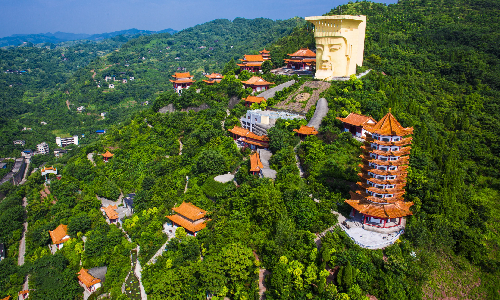
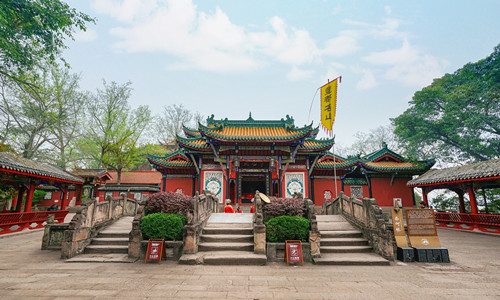
After getting up in the early morning, you can join the Tai Chi morning exercise group to relax yourself. It is a beneficial activity for you to keep in good health.
After breakfast, we will cruise the Qutang Gorge and Wu Gorge. Qutang Gorge is the first gorge in the three gorges from west to east as we can see. Starting from Baidi Mountain, Fengjie County in the west and ending at Daxi Town, Wushan County in the east, Qutang Gorge is about 8 kilometers in length. It is the shortest gorge in three gorges, but it is the most precipitous and splendid one. The width of the river is reduced to 100 to 200 meters and the narrowest place is only a few dozens of meters in width. But the main peaks on the banks are about more than 1,000 meters high. Thus, the turbulent waters flowing through the deep gorge along a continuous line of peaks make a most spectacular picture. In addition, there are also a lot of tourist attractions that you can enjoy, such as the White Emperor City, Mengliang Stairway, Hanging Monk Rock, Eight Element Battle Formation, Kuimen Gate and other famous and historically significant sites.
The Wu Gorge is the second gorge of the Three Gorges that the Yangtze River flows through. Winding about 46 kilometers, it starts from the mouth of the Daning River in the west and ends at Guandukou in Badong County, Hubei Province. It is also famous for its forest covered mountains and changeable clouds as well as writhing mists around the top of the gorge. There are also many Chinese poets composing poems to praise the beautiful and mysterious scenery in the Wu Gorge. Travelling along the gorge, you can enjoy various scenery, such as the Twelve Peaks of Wushan, Goddess Peak, Fragrant Stream, and so on. Especially, the Twelve Peaks of Wushan is the most famous tourist attractions among them.
When talking about the Twelve Peaks, there was a story about its origin. It was said like this: In the time of Da Yu’s flood control, the West Queen Mother’s 23rd daughter Yao Ji lived in the Yaochi Palace. She was a smart and kind girl but couldn’t tolerate her lonely life in the palace. On August 15th, she invited her 11 sisters to hang out in all directions. When arriving at Wushan, they saw 12 evil dragons were making waves. Meanwhile, Da Yu, the man who was responsible for controlling flood, was also besieged by the flood. Yao Ji admired Da Yu’s noble spirit in water-controlling and decided to help him, so she sent him a book about controlling flood. Unfortunately, before Yao Ji told Da Yu how to decipher this book, she was caught by heavenly soldiers sent by her mother from the palace. Twelve fairies had long been tired of their life in the palace, so they broke the divine chain and got free, returning to the world. After that, they helped Da Yu clear the road and relieve the flood. From that time on, Yao Ji had fallen in love with the Three Gorges and bustled among the peaks of Wushan, helping boat people would eliminate water demos, driving fierce animals for the woodcutter, and helping farmers distribute clouds and rain, and so on. With time going by, the twelve sisters forgot to go back home, and then they became twelve magnificent peaks, standing at both sides of the Wu Gorge. And among them, Yao Ji is the highest one and the first to see the morning glow, so she enjoys the reputation of “Wangxia Peak”. Anyway, only if you go there in person will you feel the beauty of this attraction.
After your visit, we have prepared buffet lunch for you. You can choose anything you like.
In the afternoon, we will transfer from the cruise ship to the small tour boat for shore excursion: Goddess Stream. Situated at the south bank of the Yangtze River, the river has a total length of 31.9 kilometers and is about 20 kilometers away from Wushan County. With fast-flowing water and narrow channel, the stream houses about a 1600-meter-long trackless primitive valley.
While cruising through the stream, you can enjoy a leisure time to grasp the surprises and explore the undiscovered things. There are two famous human landscapes; Wushan Cloud and Giant Peak, having attracted a great number of tourists from all over the world. On the southeast of Rising Peak, you can see three Chinese characters - Wushanyun (Wushan Cloud) being sculptured clearly on the steep cliff. And the Giant Peak is named after Chinese Giant, Mao Zedong.
In the evening, we will hold the Captain’s Farewell Banquet to express our thanks for his hard working in the past few days. If you have some words to speak to him, you should seize this opportunity. And your today’s cruise will come to an end. Tomorrow, we will initiate a new segment of cruise on Yangtze River. Let’s just look ahead to what wonderful scenery you can see the next day.

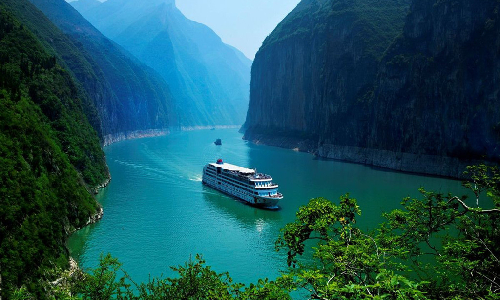
 Yichang
Yichang Guilin
Guilin In the morning, we will go to Three Gorges Dam Site for shore excursion. The Three Gorges Dam is located in Sandouping Town of Yichang City, Hubei Province and about 38 kilometers from the Gezhouba Hydropower Project. As the pearl of the Yangtze River, the Three Gorges Dam Site is one of the most popular tourist attractions when cruising the Yangtze River. And this shore excursion is one of the best ways to enjoy the gorgeous scenery.
When it comes to some tourist attractions, there are 5 park zones in Three Gorges Dam Site - the Three Gorges Exhibition Hall, 185 Park Zone, Tanzi Ling Park, Dam Crest Scenic Area and Interception Memorial Garden. Among them, Tanzi Ling Park is the best place for you to have a panoramic view of Three Gorges Dam and overlook the Yangtze River. If strolling around the area close to the dam and 185 Park Zone during rainy season, you may have a chance to appreciate the magnificent and thunderous flood discharge. In addition, you can also choose an additional shore excursion: board sightseeing-ferry sailing through TGP Ship’s elevator. But you should pay for this program on spot if you would like to take part in it. Through such excursion, you can appreciate the scenery from a unique sight. All in all, I believe this Yangtze cruise tour will not disappoint or regret you and you can get an unforgettable and wonderful experience from it.
After that, we will take shuttle bus to Yichang Three Gorges Center Cruise Terminal. Your tour guide will pick you up here and escort you to the airport. And then you will take a flight to Guilin. After your arrival in Guilin, your guide will pick you up at the airport and escort you to the hotel for a good rest. The next day, we will start a new segment of tour in Guilin.
Guilin, a small city with about one million people in South China’s Guangxi Zhuang Autonomous Region, is one of the world’s most beautiful places with its clear rivers, karst landscapes, idyllic countryside, majestic rice terraces, and ethnic minorities. Just as the sentence “By water, by mountains, most lovely, Guilin” goes, Guilin is famous for its waters and mountains. You can enjoy the karst scenery including karst hills. Usually, the Elephant Trunk Hill, Fubo Hill, Folded Brocade Hill, and Xianggong Hill are the best karst hills that are suggested for you to climb or visit. In addition, you can also visit local idyllic countryside and enjoy the spectacular scenery in Yangshuo. If lucky enough, you will be amazed by the Longji Rice Terraces. And you can also appreciate local ethnic culture here.
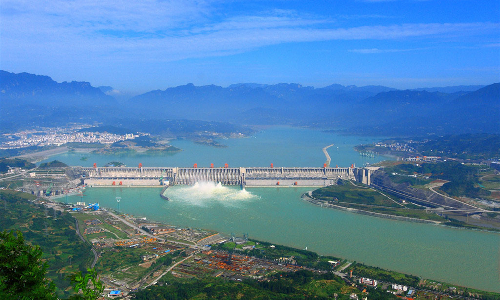
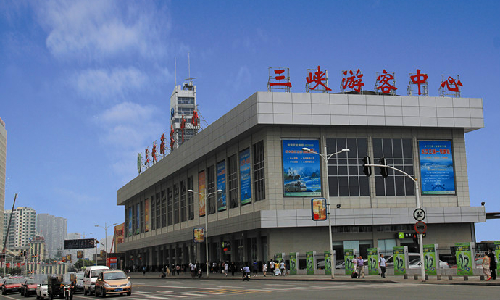
In the morning, we will take Li River Cruise to Yangshuo. During the cruise, you will enjoy the magnificent scenery. The lucid water of the river is just like a mirror, and the lush mountains, grotesque stones, and green bushes are reflected in the mirror. All of these thus form a spectacular ink painting. Just as the poem Du Fu described: while rowing a boat on the green river, the beauty is just like a painting while people are travelling there. What a splendid scenery we can enjoy!
After a long-term cruise, it is time for lunch. We will have lunch on the cruise. There are two different kinds of lunch for different cruises. The three-star cruises provide Chinese box lunch while the four-star ones provide Chinese buffet. Usually, we acquiescently arrange three-star cruises for you. If you want a four-star cruise, please contact us in advance.
In the afternoon, we will visit Yangshuo West Street. Yangshuo West Street is the oldest street in Yangshuo with a history of more than 1,400 years. Situated in the central Yangshuo Ancient Town, the street is about 8 meters wide and 800 meters long, winding in the shape of “S”. Being paved with marble and adorned with typical decorations, the street has attracted a great number of tourists from all over the world. Especially, the street is admired by foreigners for its simple style and courtyard-like shape. This street is also called “Foreign Street” because foreign tourists outnumber Chinese tourists. Strolling here, you will find even local elderly Chinese people can not only speak local dialects but also English. And English has become a language for daily use here.
Walking along the street, you will be surrounded by various stores that sell different kinds of traditional Chinese crafts and art works. Besides, you will be tempted by a variety of foods from all over the world. For instance, you can enjoy rice noodles of Yangshuo, banana cake and other western foods. So, choose a café or store and relax yourself, experiencing the leisure life here.
After that, we will head back to the hotel for breaks and prepare for tomorrow’s tour.
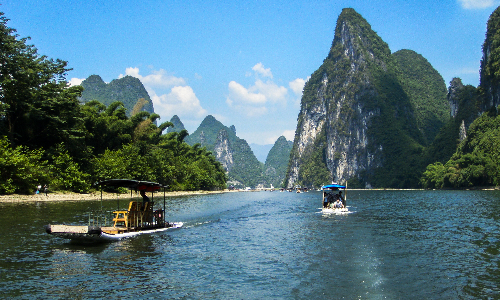
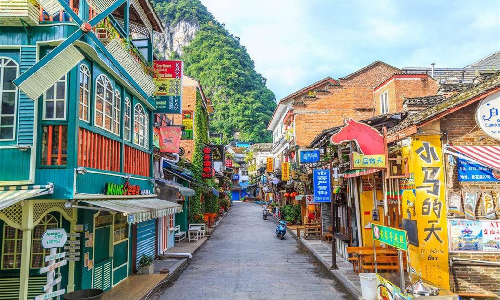
 Hong Kong
Hong Kong In the morning, we will send you to the Guilin Railway Station to take the estimated train G319 12: 38/15:57 to Hong Kong. After arrival, our tour guide will pick you up at the airport and then escort you to the preserved hotel for a good rest and prepare for the tour next day.
Hong Kong is a metropolitan and a special administrative region of China in the southern part of China, bordering Guangdong Province and seeing Macao across the sea. With more than 7.5 million people living in an area of 1,104 square kilometers, Hong Kong is one of the most populous places around the world. Originally it was leased from China for 99 years from 1989 to 1997 to the Britain government. Up till 1997, Hong Kong has returned to China after the Chinese-British joint declaration signed on December 19, 1989. After returning to China and years of development, Hong Kong has become one of the most significant financial centers and commercial ports in the world. Now, Hong Kong is a prosperous city that you can enjoy its beauty while walking on the street. It is suggested that you take the Star Ferry to enjoy the beautiful night scenery of Victoria Harbor or visit the Temple Street to buy some souvenirs and taste local snacks in the evening. All of these will bring you an enjoyment and an unforgettable memory.
This morning, we will visit Victoria Peak, Repulse Bay and Stanley Market separately. Firstly, we will take the Peak Tram to the Victoria Peak. The Victoria Peak is a hill on the west of Hong Kong Island and is also known as Mount Austin. It is a major tourist attraction with about 7 million visitors every year. As the highest point in Hong Kong, you can have a panoramic view of the whole city, including the Victoria Port and the scenery of Kowloon. You can take some spectacular photos and post them on your Facebook or Twitter to share with your friends. In addition, there are some shopping malls in the peak, so you can enjoy the delicacy and local snacks there.
Then, we will head toward Repulse Bay. The Repulse Bay, located in the south of Hong Kong, is the most popular and spectacular bay in the region. Its English name originates from several versions of stories. One of them goes like this: In 1841, the bay used to be the pirates’ base and attracted foreign merchant’s attention when their ships always failed loading goods to China through the bay. Subsequently, the pirates were repulsed by the Royal Navy, hence the name.
Nowadays, the place is one of the most luxurious residential areas for dining, relaxation, and some fascinating aquatic activities. The beach, with golden and soft sand, stretches a long distance with clear azure blue water gently lapping the seashore. With its water temperatures ranging from 16°C to 26°C all year round, it is a mecca for locals and visitors to escape the heat in summer. Swimming is the most popular activity among visitors. You can swim here without any worries because the Repulse Bay is equipped with shark prevention nets and the lifeguard is also on duty all the time. In addition, there are extensive facilities that are available for you. For instance, the barbecue racks, supermarkets, and cafes are near the beach. Besides, the lighthouse near the beach is a good place to take some photos and enjoy the sunset. Exceptionally, the Deep Water Bay, Middle Bay, or South Bay are also attractive tourist attractions that you can visit if time permits.
Afterwards, we will go to Stanley Market. The market, a traditional open-air one, is located in the south of Hong Kong Island, with numerous visitors bustling for various goods. Famous for its relaxed ambience, comfortable sea surroundings and bargains, it boasts various kinds of stalls and stores selling inexpensive souvenirs, art works, traditional Chinese dresses, clothes, and many other feature goods. While strolling in the street, it is a great joy to be a bargain-hunter, selecting the goods you like while haggling with shopkeepers or stallholders. If you are hungry, there are all kinds of bars, restaurants, and snack stores you can choose. It is really a great fun to come here!
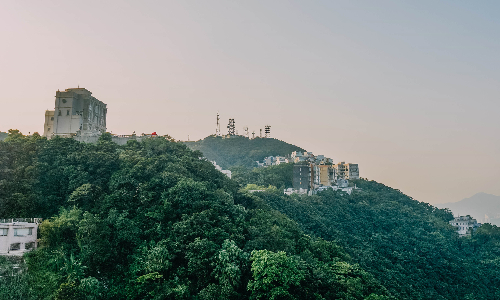

After breakfast, our tour guide will escort you to the airport according to your flight schedule in Hong Kong. It also indicates that the unforgettable and fascinating Yangtze cruise tour ends now. And it is time to say farewell to all your guys. In the past few days, I believe all of you have enjoyed the 15-day tour in various tourist attractions in China and the tour must have left an impressive and unforgettable experience and memory in your life. We expect your visiting next time in China and please take your friends for the next tour with us.
Author: Hu Senjing
| City | Five Star hotel list | Four Star hotel list |
|---|---|---|
| Beijing | Sunworld Dynasty Hotel Beijing Wangfujing | Sunworld Hotel Wangfujing |
| Xi'an | Tianyu Gloria Grand Hotel Xi'an | Sunworld Dynasty Hotel |
| Luoyang | Lee Royal Hotel Mudu | Xinyuan International Hotel |
| Yangtze River Cruise | Victoria Anna | Victoria Anna |
| Guilin | Lijiang Waterfall Hotel | Guilin Bravo Hotel |
| Yangshuo | Yangshuo Greenlotus Hotel | New Century Hotel |
| Hong Kong | Harbour Grand Kowloon | Harbour Plaza North Point Hotel |
 |
![]() About your child or infant, please contact us for a discounted price.
About your child or infant, please contact us for a discounted price.



We started with a few days in Beijing & ended in Shanghai, from where we visited the Forbidden City and Great Wall. In between we visited Terra Cotta Warriors Museum, Panda Base, Shanghai Disneyland.

We had a wonderful holiday in China which will remain long in the memory. China is a breathtakingly beautiful country full of splendid temples and palaces, mountains and rivers, peaceful rural scenes and bustling shopping streets.
 QUICK ENQUIRY
QUICK ENQUIRY